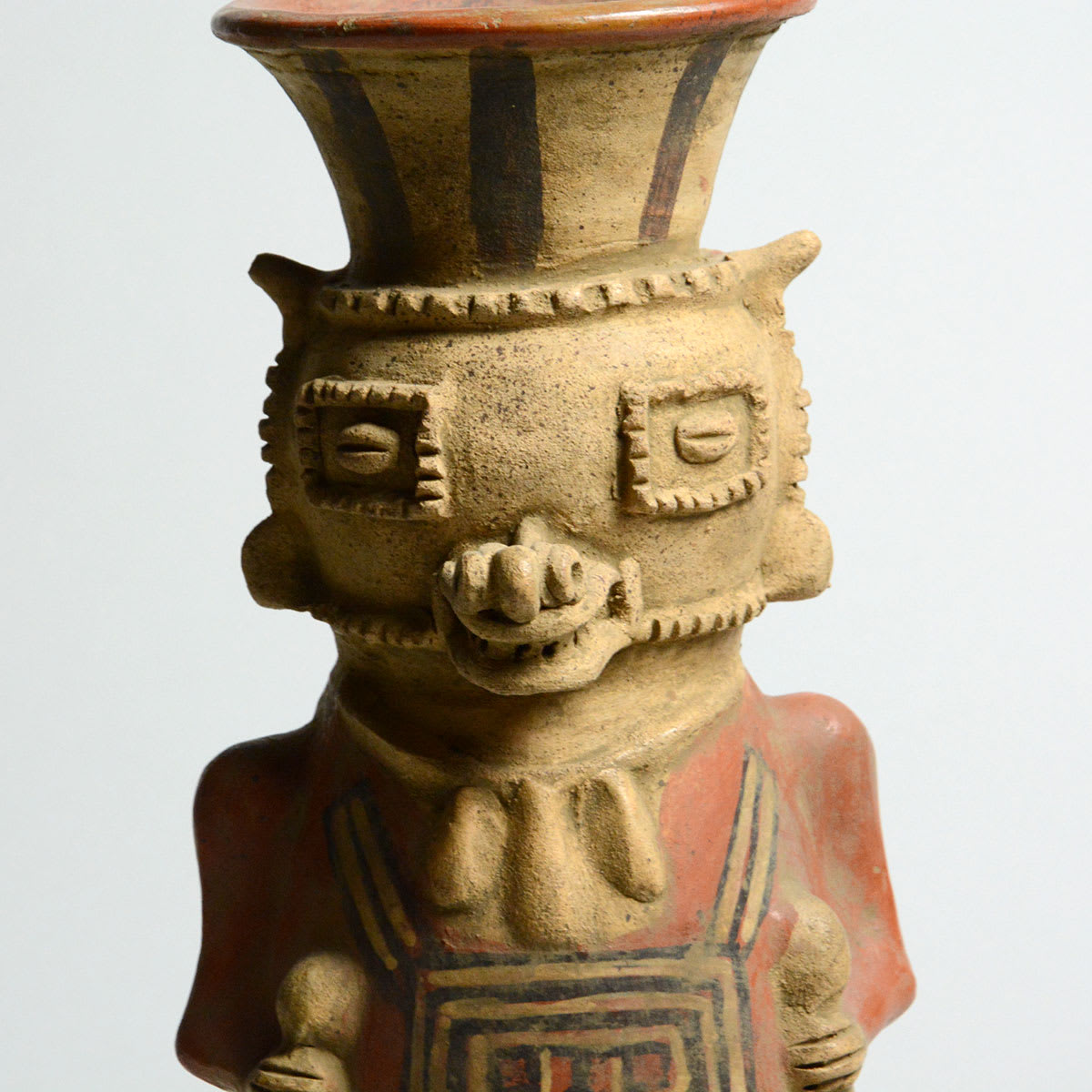Vessel in the Form of a Saurian Deity, 1000 CE - 1300 CE
Terracotta
height 39.4 cm
height 15 1/2 in
height 15 1/2 in
PF.3436
Further images
In Ancient Costa Rica, artists created dark-brown or red-slipped vessels, usually characterized by modeled zoomorphic features that seem to represent human figures with zoomorphic masks and other animal features. This...
In Ancient Costa Rica, artists created dark-brown or red-slipped vessels, usually characterized by modeled zoomorphic features that seem to represent human figures with zoomorphic masks and other animal features. This particular effigy vessel is a figure wearing a crocodile mask, standing on two legs and a tail. The mask is sculpted in an elaborate manner, with its intricate snout revealing teeth. And the coffee bean-like eyes are enclosed in a high-relief rectangular shape. On the chest is a painted image of highly stylized figure, possibly the Meso-American rain God, Tloloc. Such magnificent figure also holds in each hand musical instruments. Perhaps it is a representation of a participant of a ritual or a special ceremony, a priest wearing a crocodile mask playing musical instruments. Was the priest chanting, along with the magical sounds of the instruments, for rain and agricultural prosperity? Or could he have been performing a ritual to appease the gods? Crocodiles were a predominant motif in Ancient Costa Rica, often appearing as mythical beings. The amphibian nature of a crocodile gives them the ability to live in water and on earth. Most likely this was the source for the mythical symbolism. Dressed in rich orange color, this Ancient sculpture is a magnificent example of Costa Rican art and history. Although we may not be able to decipher the Ancient iconography and symbolism, we are awed and delighted to see this wonderful artwork from the Ancient world.







